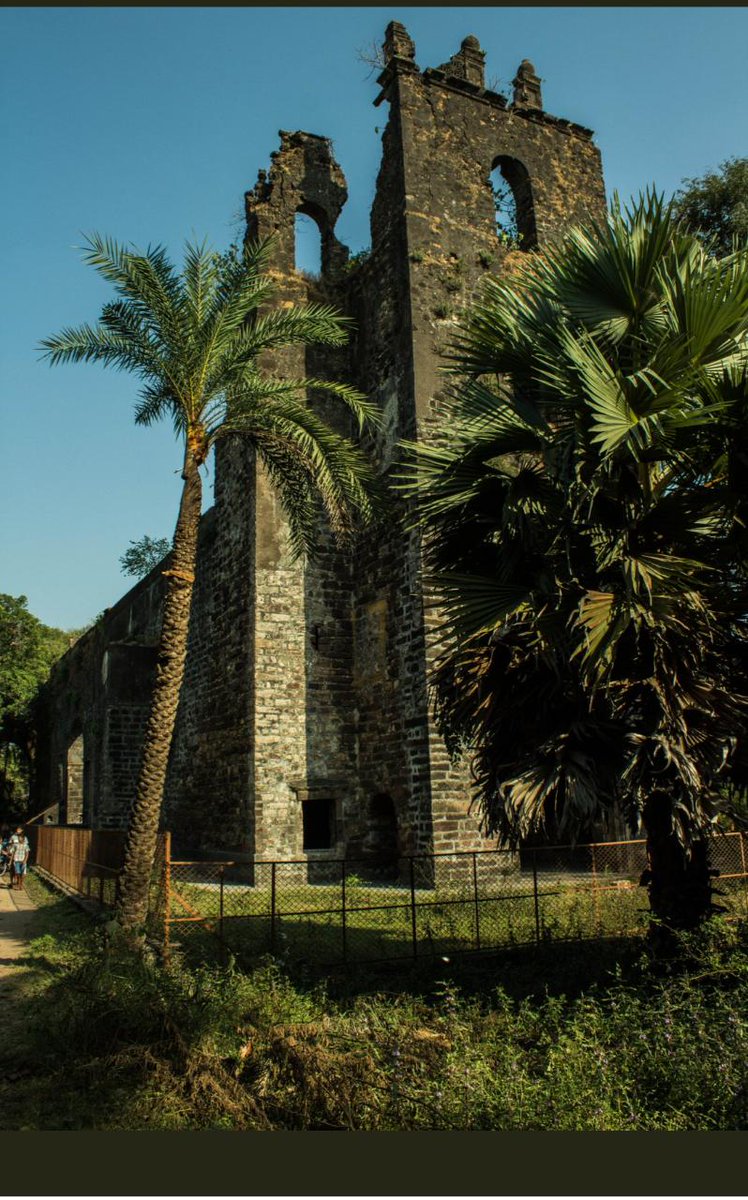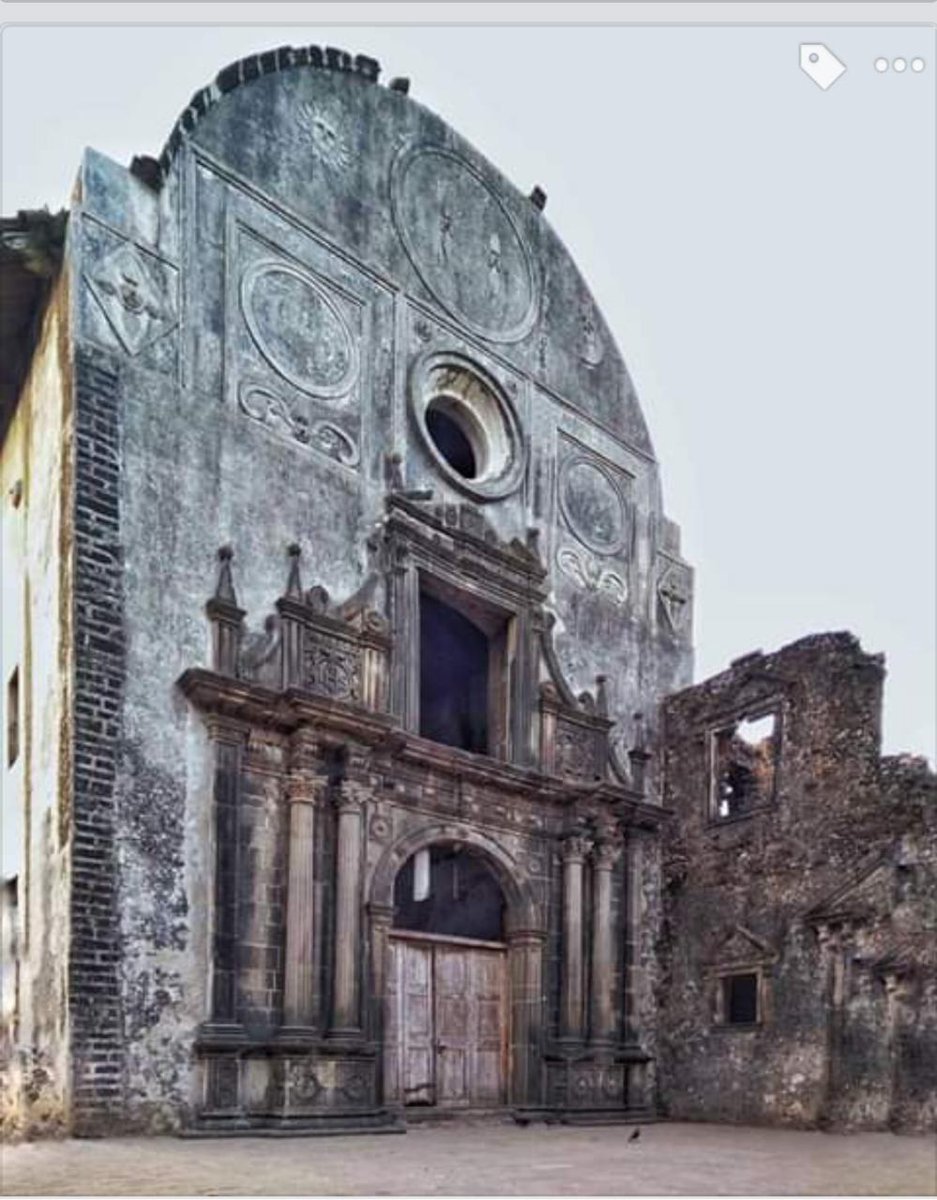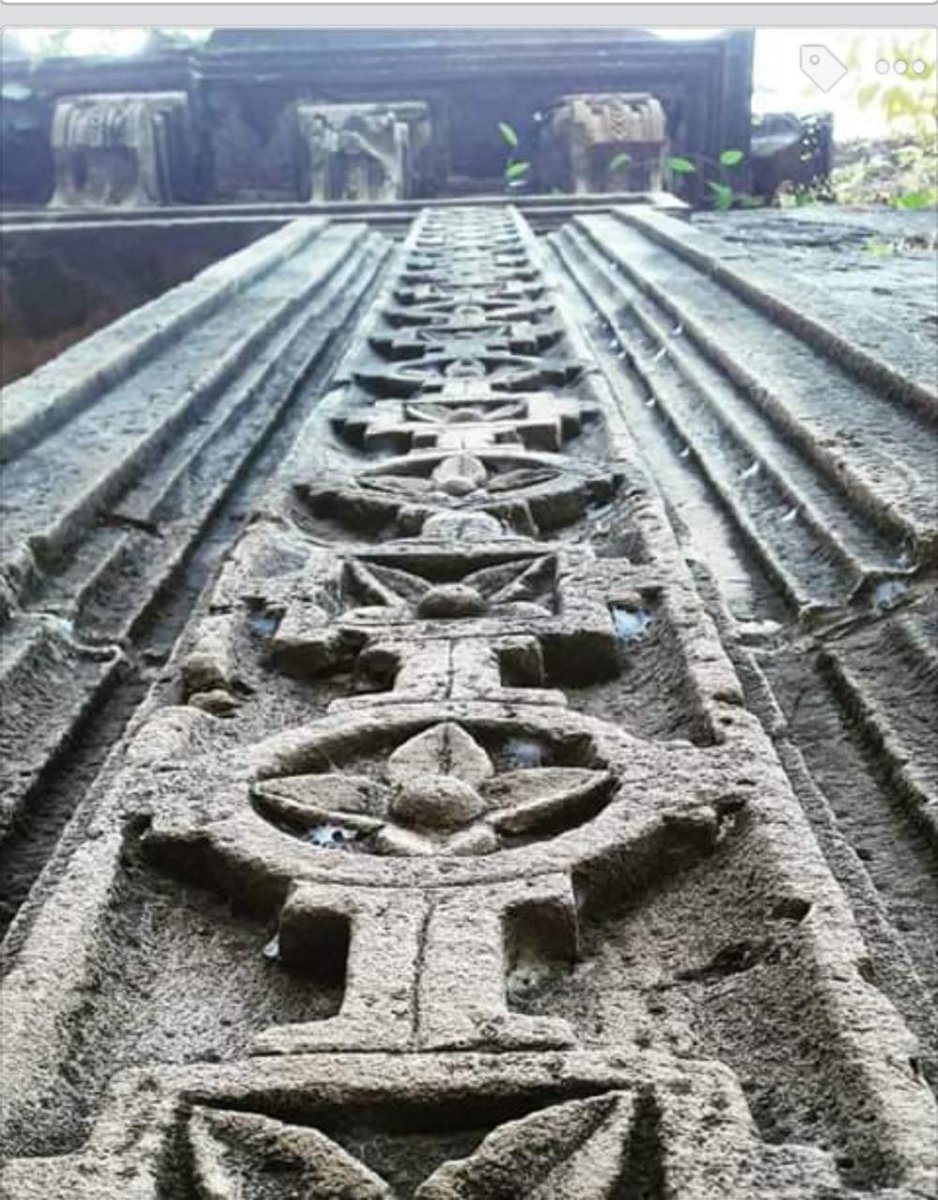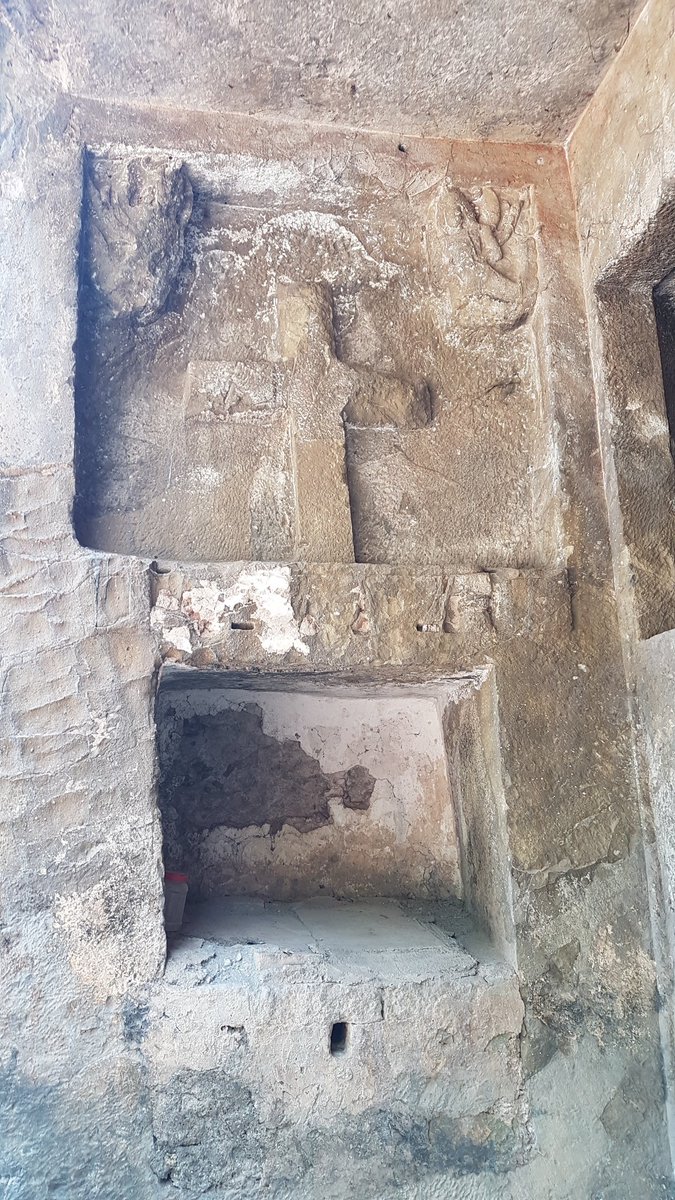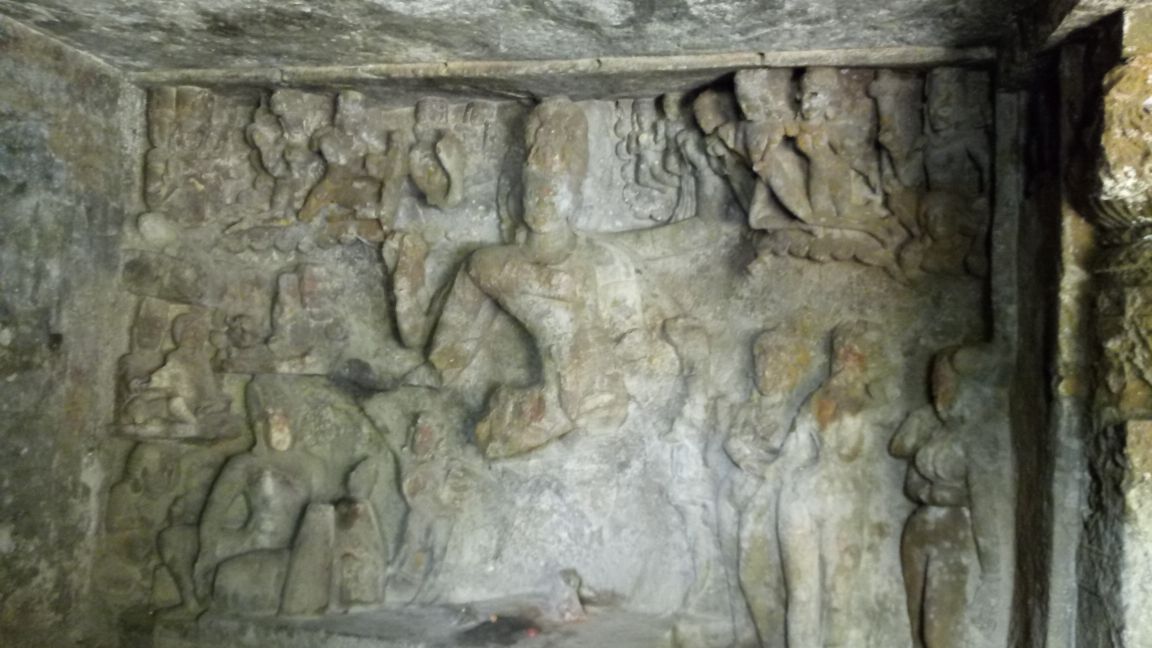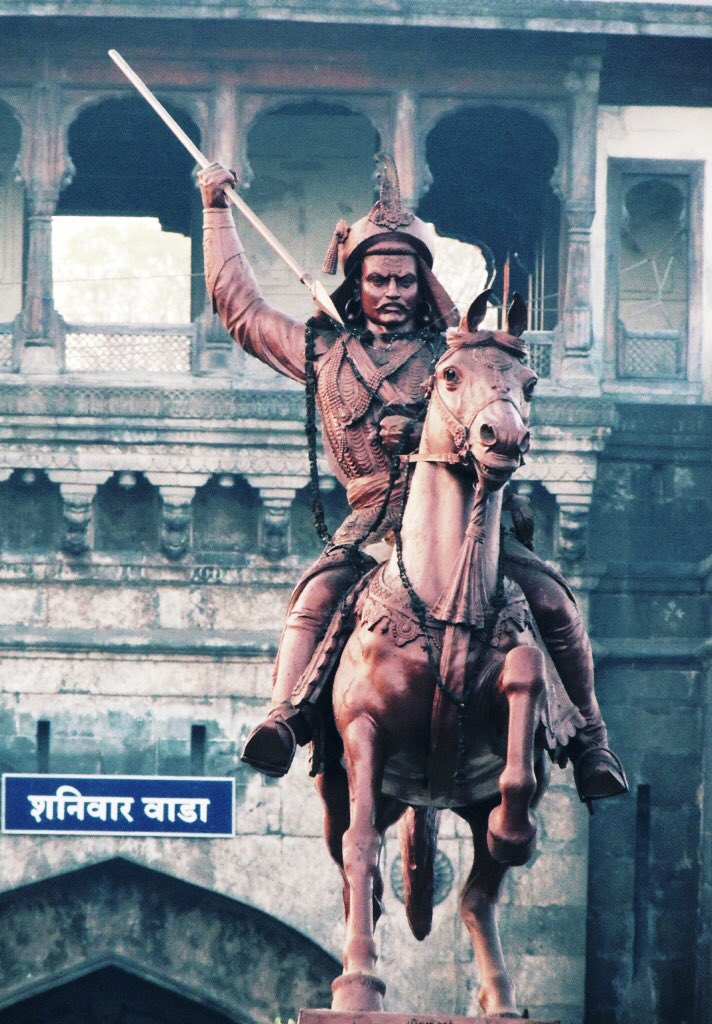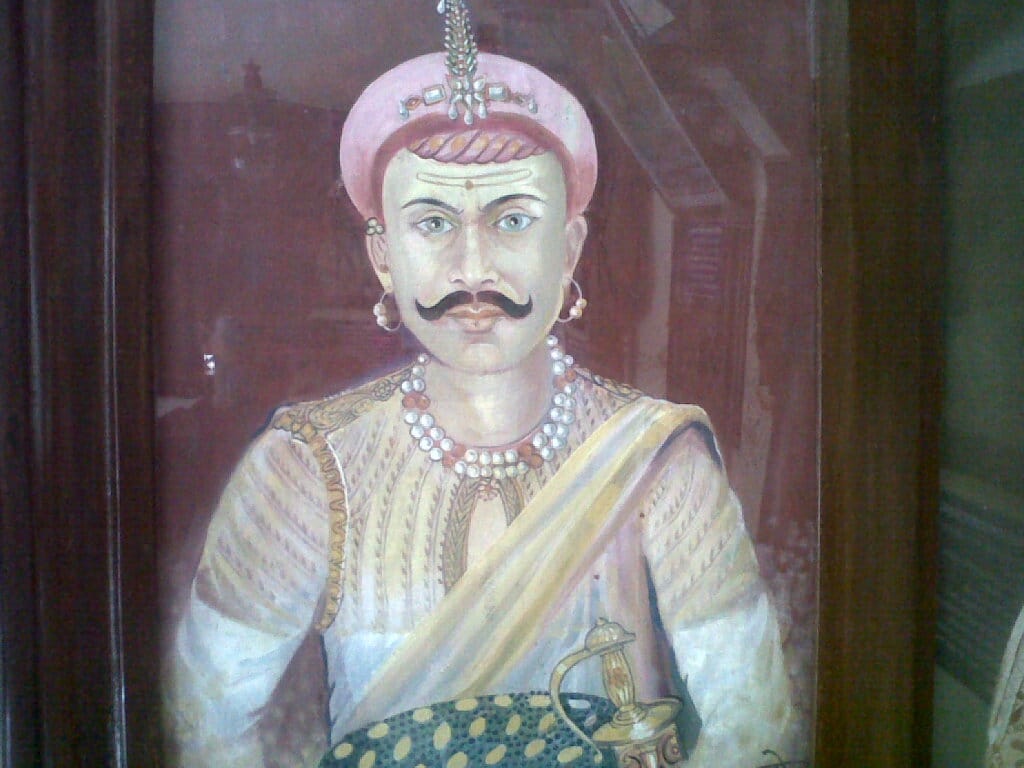Chimaji Appa and the Battle of Vasai Fort against Portuguese
After the discovery of India by the Portuguese Explorer Vasco da gama in 1498, Portuguese started to arrive in India with the intent of Conquering and Ruiling India in 16th Century.
(1/n)
After the discovery of India by the Portuguese Explorer Vasco da gama in 1498, Portuguese started to arrive in India with the intent of Conquering and Ruiling India in 16th Century.
(1/n)
They arrived on the Western Coastline of India and started to capture neighboring areas. They consolidated their power in the Konkan and established a strong foothold in Goa. Bassein (Vasai) is situated at 70 km North of Mumbai on the Arabian Sea.
(2/n)
(2/n)
In year 1414, a person named Bhandari Bhengale had built the fort of Vasai as a small structure. King of Gujrat Sultanate won the fort in 15th century and held it till 1534. During the period of 1528-1534, Portuguese captured& burnt the city of Bassein& destroyed the fort.
(3/n)
(3/n)
In 1534, the Sultan of Gujarat ceded by treaty Bassein to Portuguese. The Bassein region ruled by Portuguese in not just Bassein but included areas far away as Bombay, Thane, Kalyan, Belapur, Mahim, Vadala, Sion, Worli, Mazgao, Caranja, and Chaul (Revdanda).
(4/n)
(4/n)
Knowing the strategic importance of the Place, Portuguese rebuilt the Vasai Fort. The fort was surrounded by Sea from 3 sides& Village from 4th side. The Portuguese town flourished around the fort. It was easy for Portuguese to defend their Positions in Western GJ &....
(5/n)
(5/n)
Northern Konkan from the Vasai Fort. Many other small forts were also built at Mahim, Thana, Dahanu, etc in defense of the Position. To the Portuguese, Bassein was an important Trading centre located on the Arabian Sea that would give them access to global sea routes...
(6/n)
(6/n)
..and goods such as Salt, Fish, Timber and Mineral Resources. The Portuguese built 2 Churches in Vasai 9 churches in neighboring area of Agashi, Thane etc. During the Portuguese rule, a large chunk of Local Indian Population was forcefully converted to Christianity.
(7/n)
(7/n)
Beautiful Mandapeshwar Caves in Borivali were partly destroyed by Portuguese to make way for a Chapel. Existing Murals were altered to create a Cross.
From their headquarters in Goa they ran a theological Christian state along the coastal region from Daman to Mangalore.
(8/n)
From their headquarters in Goa they ran a theological Christian state along the coastal region from Daman to Mangalore.
(8/n)
To spread the Christianity, Inquisition was promulgated throughout the Portuguese possessions in India & a program to annihilate Hindus through conversion or massacre commenced. Hindus were subjected to torture frequently surpassing even the barbarity of Islamic rulers.
(9/n)
(9/n)
By 1736 the Portuguese had been at work for 4 years constructing the fortress of Thana, and aside from the long delays, the workers were unpaid and unfed. The people were tired of the oppression, finally invited the Marathas to take possession of the island of Salsette,...
(10/n)
(10/n)
preferring their rule to the oppression of the Portuguese. It was in this milieu that the Marathas arose, ignited by the call of swaraj given by Chatrapati Shivaji Maharaj, to restore the land of India to the sons of the soil. While Bajirao was waging war against.....
(11/n)
(11/n)
the Mughal empire, Chimnaji Appa concentrated his energies towards the Western Ghats. Vasai (formerly known as Bassein) was the ultimate objective of the war, as this was the capital of the provincial government of Portugal’s northern Indian possessions.
(12/n)
(12/n)
Who was Chimaji Appa?
Chimaji Appa is the younger brother of Peshwa Bajirao 1st. Bajirao expanded the Maratha Empire till Delhi, almost finished the Mughals. Chimaji was born in the year 1706. Bajirao and Chimaji were almost like Ram and Lakshman of Maratha Empire.
(13/n)
Chimaji Appa is the younger brother of Peshwa Bajirao 1st. Bajirao expanded the Maratha Empire till Delhi, almost finished the Mughals. Chimaji was born in the year 1706. Bajirao and Chimaji were almost like Ram and Lakshman of Maratha Empire.
(13/n)
Chimaji never had the lust to become a Peshwa himself. He always supported Bajirao with all his might and always remained loyal to the state. Whenever Bajirao used to go on Mission to expand Maratha Empire in the North, Chimaji used to take care of the Western Front.
(14/n)
(14/n)
Bajirao won the War, but Chimaji was his shield. Chimaji Appa died on 27th December 1940, just few months after Bajirao& #39;s death. The Hero of the 3rd battle of Panipat, Sadashiv Rao Bhau Peshwa was the son of the Great Chimaji Appa.
(15/n)
(15/n)
How Marathas Captured Konkan
Portuguese were a strong Power in Konkan for almost 200 years. They had strong artillery and Naval Power. Of late they had begun building a massive fort at Thane across the narrowest part of a creek that separated the mainland from the island.
(16/n)
Portuguese were a strong Power in Konkan for almost 200 years. They had strong artillery and Naval Power. Of late they had begun building a massive fort at Thane across the narrowest part of a creek that separated the mainland from the island.
(16/n)
Sashti north of Bombay, which was an English possession. This fort would seal the last entry point into Sashti. It was necessary therefore to act before this fort was ready and manned. In March 1737 therefore, Chimaji Appa reached the Konkan and sent a small group of..
(17/n)
(17/n)
Maratha troops to land near the incomplete fort and occupied it. Within weeks they had captured the island of Sashti save a small fort on the west coast. The second Maratha attack was on the fort of Vasai (known as Bassein at the time) north of the Ulhas river estuary.
(18/n)
(18/n)
This fort was surrounded by water on three sides and had strongly fortified walls and towers. The Portuguese garrison was strong. The fort facing the land had a long open stretch before it making any approach an invitation for a fusillade from the guns on the fort walls.
(19/n)
(19/n)
The attempt failed, with many casualties and had to be abandoned. In 1738, Chimmaji briefly left the battle of vasai to join his brother Bajirao in the battle of Malwa against Nizam ul Mulk.
The year 1739 dawned with an all-out attack on the fort of Vasai.
(20/n)
The year 1739 dawned with an all-out attack on the fort of Vasai.
(20/n)
Chimaji Appa with prominent Marathas like Holkar, Shinde, Janojirao, Kanitkar and Angre gathered in the Konkan determined to extirpate the tyrannical Portuguese power. A separate army was sent towards Goa so no succour could be sent by the Viceroy to the garrison at Vasai.
(21/n)
(21/n)
Every inch was fought by the Portuguese. In the sandy soil to the north of the fort it was difficult to lay mines. The other three sides were protected by the sea and the creek. A steady fire from the fort walls prevented the Marathas from getting very close.
(22/n)
(22/n)
Mines barely reached the fort walls. Many sallies by the Maratha cavalry were beaten back. Mortars were continuously fired inside the fort causing considerable damage to the buildings and the men and families inside. However, the Portuguese refused to relent.
(23/n)
(23/n)
Chimaji, although not in good health at this time, also refused to withdraw. Chimaji told his men, "either capture the fort or stuff my body in a cannon and fire it inside the fort". The determination began to pay off. Marathas inched closer and closer to the fort walls.
(24/n)
(24/n)
Heavy casualties were taking a toll from the incessant fire from the fort. However, in early May the Marathas managed to lay mines under the fort walls. Of the five mines laid, three were blown up and a part of the wall was breached. Just as the Marathas rushed into..
(25/n)
(25/n)
..the breach, another mine exploded killing scores of them. However, the fight now reached the inside of the fort. The Portuguese knew that the time had come to surrender.
The fierce battles to liberate Sashti and Vasai had cost the Marathas 12k lives over 3 years.
(26/n)
The fierce battles to liberate Sashti and Vasai had cost the Marathas 12k lives over 3 years.
(26/n)
Along with the chief fort of Vasai, a string of lesser forts like Asheri, Arnala& Tarapur had also been taken at heavy cost. On 16th May 1739, the Portuguese hoisted the white flag of surrender. Chimaji was magnanimous in victory. He allowed the Portuguese to evacuate..
(27/n)
(27/n)
https://twitter.com/accountantvarun/status/1261679243676667904?s=19">https://twitter.com/accountan...

 Read on Twitter
Read on Twitter
